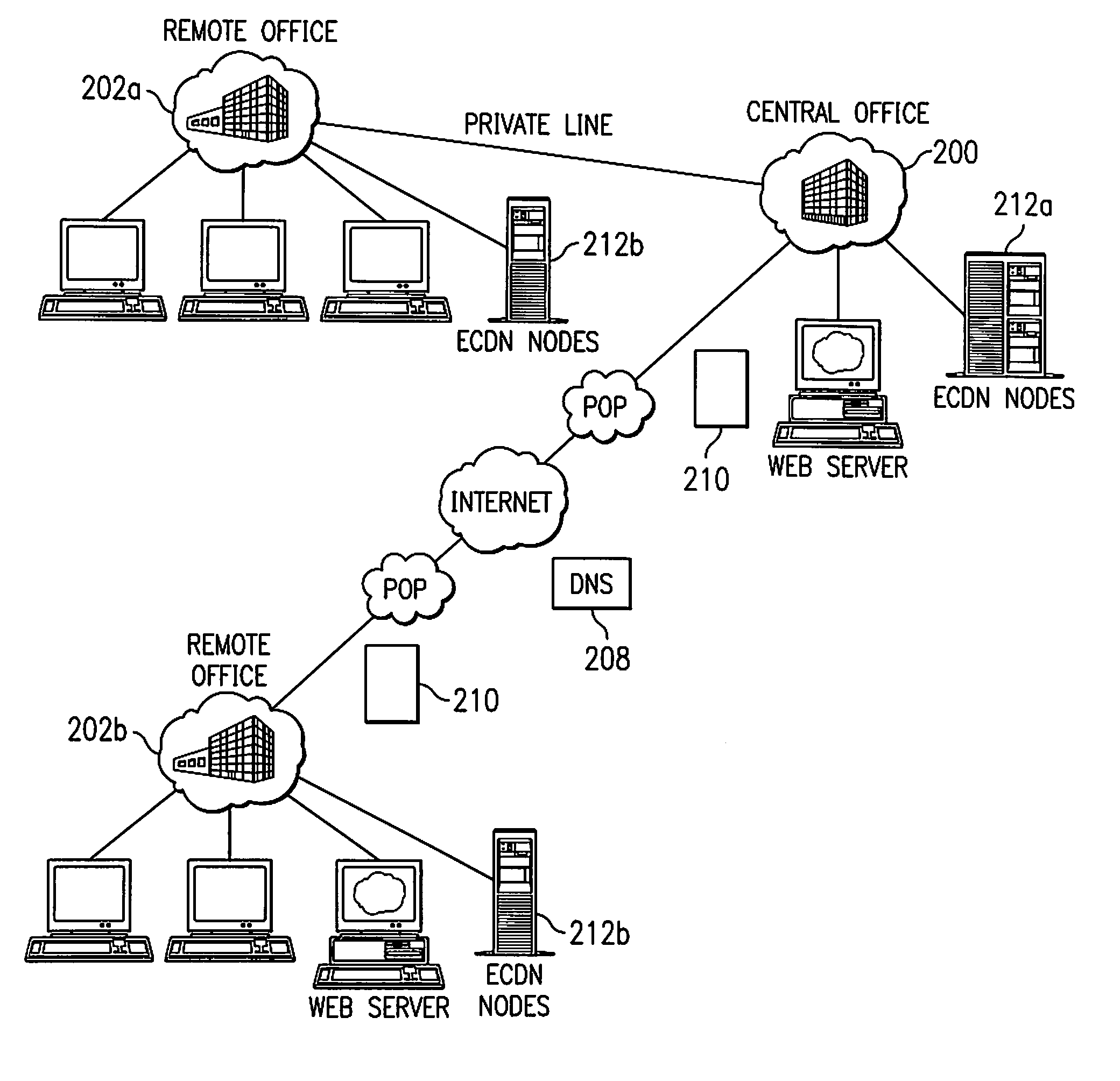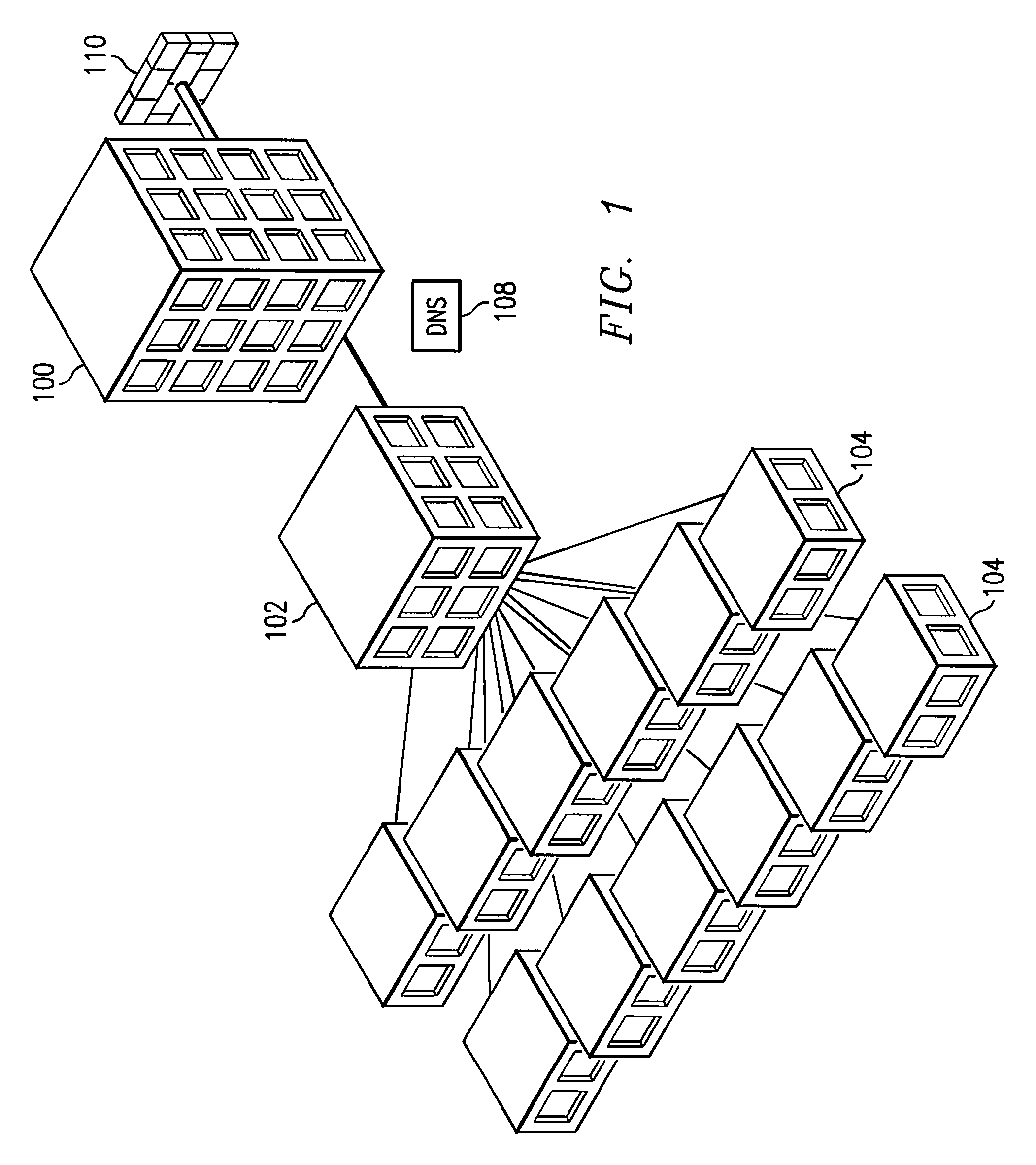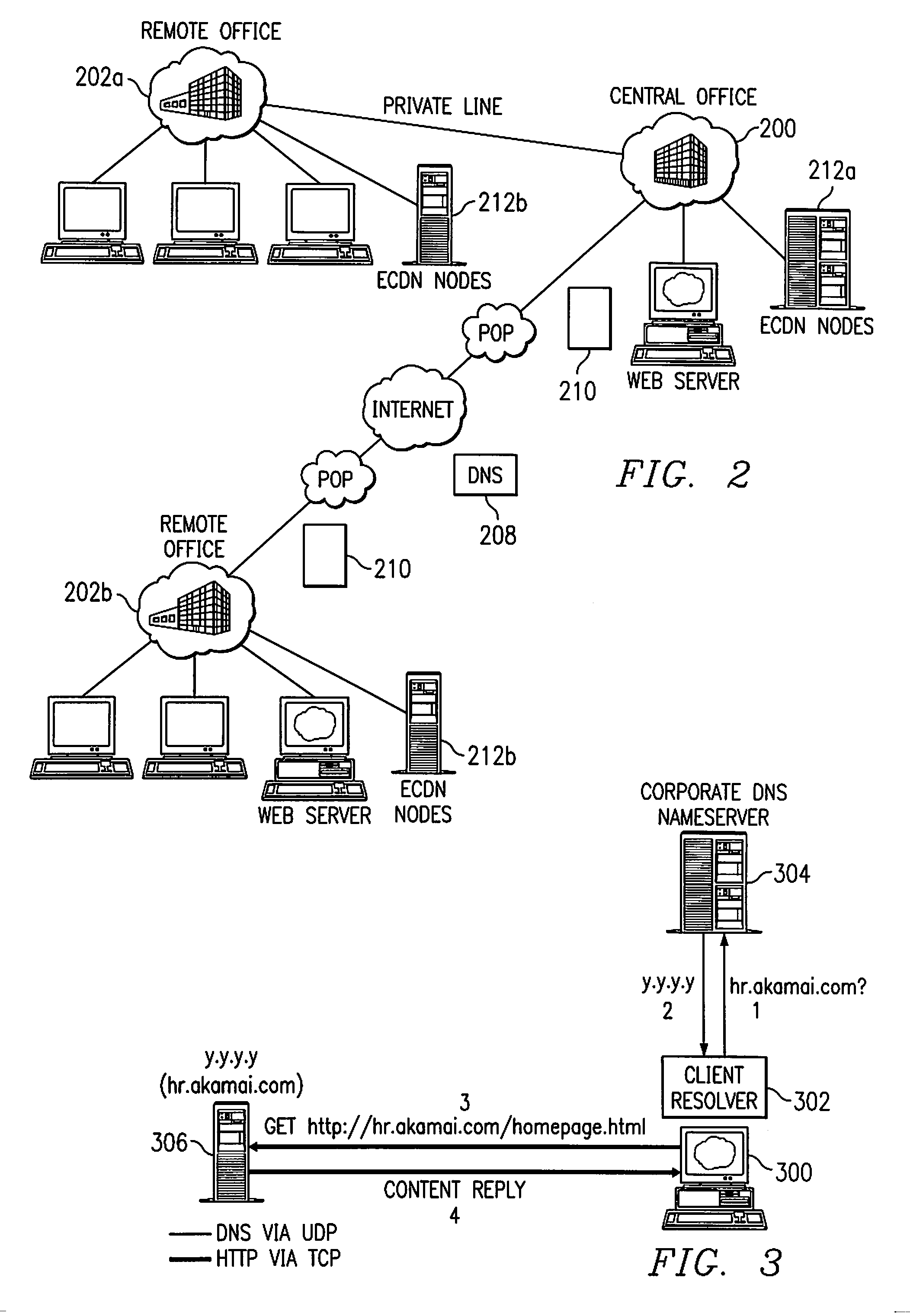Using virtual domain name service (DNS) zones for enterprise content delivery
a virtual domain name and content delivery technology, applied in the field of content delivery and management, can solve the problems of large cost of providing good access, and large network size, and achieve the effect of minimal reconfiguration and easy integration
- Summary
- Abstract
- Description
- Claims
- Application Information
AI Technical Summary
Benefits of technology
Problems solved by technology
Method used
Image
Examples
Embodiment Construction
[0024]The present invention is implemented within an “enterprise” or “enterprise environment.” Referring to FIG. 1, a representative enterprise environment in which the present invention is implemented comprises at least one primary central office 100 (e.g., with central IT support), which is connected to one or more regional datacenters 102, with each datacenter connected to one or more remote branch offices 104 via private line, or via the public Internet (most likely with a virtual private network or “VPN”). The branch offices 104 may be fully (or partially) meshed amongst themselves. FIG. 2 illustrates another enterprise computing environment that includes a central office 200 and a pair of remote offices 202. As shown in FIG. 2, remote office 202a is connected to the central office 200 over a private line, which refers to a line not generally routable over the public Internet (e.g., frame relay, satellite link, microwave link, or the like), and remote office 202b is connected t...
PUM
 Login to View More
Login to View More Abstract
Description
Claims
Application Information
 Login to View More
Login to View More - R&D
- Intellectual Property
- Life Sciences
- Materials
- Tech Scout
- Unparalleled Data Quality
- Higher Quality Content
- 60% Fewer Hallucinations
Browse by: Latest US Patents, China's latest patents, Technical Efficacy Thesaurus, Application Domain, Technology Topic, Popular Technical Reports.
© 2025 PatSnap. All rights reserved.Legal|Privacy policy|Modern Slavery Act Transparency Statement|Sitemap|About US| Contact US: help@patsnap.com



